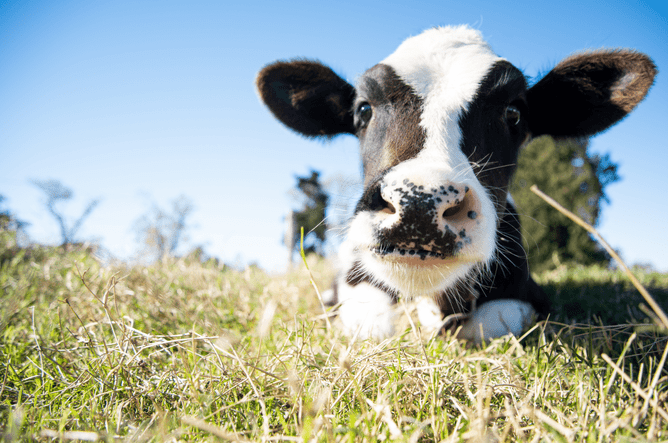Internal parasites take up some time and energy to manage in calves and cattle, so here is a little bit of information to help you understand what you are treating.
In general, worm larvae are swallowed from contaminated pasture once calves start grazing it. The larvae have overwintered in the pasture or cowpats, from the previous cattle/calves on the pasture. They then complete their lifecycle inside the calf, either in the gastrointestinal tract, or, in the case of lungworm, they burrow into the body and let the blood carry them around to the lungs.
Depending on the type of worm, the lifecycle may take about 28 days, from egg to egg-laying adult. They lay from 100 to 1000's of eggs per day, which means the larval challenge increases rapidly once the young animals are exposed by grazing the pasture. The high challenge can cause clinical disease - often seen as lack of weight gain, diarrhoea, or, in the case of lungworm, coughing.
There are four main internal parasites in cattle that cause problems in this area:
Ostertagia ostertagia.
This causes two types of disease. Primary Ostertagiosis occurs due to adult worms in the stomach causing disease. Cattle usually develop resistance to it by 15 months old, but, during the autumn and winter, changes in the diet make the immature worms burrow into the stomach wall and hibernate. When spring comes, a sudden change in diet to lush grass can cause these worms to all break out of the stomach wall at the same time, and if there are a few thousand of them, they can cause type 2 Ostertagiosis.
The ‘mectin-family type drenches are effective at treating Ostertagia, and an early winter and early spring drench is usually enough to prevent type 2 Ostertagiosis.
Cooperia onchophora
Ostertagia Cooperia never used to be thought of as a problem, as large numbers of worms can be present with no visible effect. However, it can and does cause disease, because it is mostly resistant to the ‘mectin-family drenches. Calves usually develop resistance to it by 12 months old.
Trichostrongylus axei
Trichostrongylus, which live in the fourth stomach and small intestine, often causes disease later in the autumn or winter. It can burrow into the stomach lining, causing irritation.
Dictyocaulus viviparus (also known as lungworm)
Lungworm usually causes disease 2-3 weeks after infection. Shallow, rattly breathing and coughing may be seen. Infectious pneumonia may also be seen secondary to it.
Drenching
The method of drenching can affect its efficacy. Pour-on drenches have the most variability in absorption due to the conditions of the skin and haircoat. Mud, rain, and thickened skin can all reduce how much drench is absorbed.
Oral drenches must be given as a drench (there are reports of people adding it to the milk for calves). If it is added to milk to be fed, the sucking reflex means it goes to the fourth stomach instead of the rumen, which can increase the risk of toxicity. Plus, the dose cannot be controlled, so there is a greater chance of under- or overdosing and toxicity.
Our recommendations for drenches are as follows:
Turbo Intitial – this is an oral drench recommended for the first drench of calves, as it is a double-action (Eprinomectin and Levamisole), plus it has Diclazuril to aid in controlling coccidia, which the calves are also getting infected with while grazing pasture for the first time.
Calves develop immunity to coccidia faster than they do to worms, so it is only recommended for the first drench, unless there is a coccidia issue known on your farm.
During the summer, a change to Turbo Advance is a little more cost effective than continuing with the Turbo Initial, with the same double-action oral drench.
Once the calves are larger in the autumn, and following spring, we recommend a change to Turbo pour-on, which still contains the same double-action ingredients to ensure both ‘mectin-resistant Cooperia and overwintered Ostertagia are treated for.
Turbo triple mini-dose is a triple-action drench that can be used for a quarantine drench, or where drench resistance is known or suspected.
If you do suspect drench resistance, have a chat with your vet to create a management plan.

